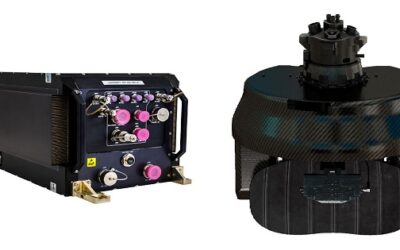NARGM promises a step change for the force’s SEAD doctrine
Work on the Defence Research and Development Organisation’s (DRDO) New Generation Anti-Radiation Missile (NGARM) commenced in 2012 with an initial budget of $62 million. Open sources state that the weapon has a range of between 100-120 kilometres. It is intended to equip the Indian Air Force’s (IAF) Sukhoi Su-MKI and Hindustan Aeronautics Limited (HAL) TEJAS series combat aircraft. The missile includes millimetric wave radar transmitting on frequencies of 30 gigahertz (GHz) and above. Millimetric wave radar is particularly useful to analyse the precision of the missile’s attack. No details have been released regarding the frequencies of the NGARM’s radar seeker. It is reasonable to assume that this covers at least a 2-20GHz waveband.
One aspect of the missile’s design which remains unclear is whether it can use an aircraft’s Radar Warning Receiver (RWR) to determine hostile radar locations, or whether a separate radar detection system has to be carried by the aircraft to give targeting information of sufficient accuracy. This is the case for the Panavia TORNADO-ECR air defence suppression aircraft flown by the German and Italian Air Forces. These aircraft use the Raytheon Emitter Locator System (ELS). This detects and geo-locates hostile radars across 500MHz to 20GHz waveband. The ELS’ design is thought to be closely based on Raytheon’s AN/ASQ-213(V) HARM Targeting System which outfits the US Air Force’s Lockheed Martin F-16CJ Block-50D VIPER WEASEL air defence suppression aircraft.
While several platforms such as the Boeing F/A-18 HORNET and SUPER HORNET, and the F-16 series can deploy the AGM-88 sans the AN/ASQ-213(V), the pod enables the aircraft to launch missiles at multiple targets, and to do so with impressive accuracy. This transforms an aircraft from employing the missile for self defence, or to protect a strike package, to assuming an offensive posture. The latter will see the aircraft can hunting and engaging radar threats as part of a wider operational effort to degrade or destroy an Integrated Air Defence System (IADS) at the theatre level.
The development of the NGARM represents an important shot in the arm for the IAF’s SEAD (Suppression of Enemy Air Defence) capabilities. The IAF is presently thought to possess around 600 Zvezda-Strela Kh-25MP (NATO reporting name AS-12 KEGLER) ARMs (Anti-Radiation Missiles). These were delivered between 1995 and 2004. They are believed to be used by the IAF’s MiG-27ML (NATO reporting name FLOGGER-D/J) jets.
This weapon has an inferior range of 40km compared to the NGARM. Given that the Kh-25MP originally entered service in the 1970s, and that the rounds India purchased were delivered in the 1990s, at best this missile maybe a generation behind the NGARM in design and performance.
Air Marshal (rtd.) Daljit Singh, a former IAF fighter pilot and highly respected electronic warfare expert, broadly welcomes the IAF’s NGARM acquisition, although he warned MONCh that, “to be really relevant and effective, the ARM would have to be capable of multimode operations. It must also be upgradable to match emerging radar technologies.”
He stressed that the missile’s seeker must be capable of detecting and locking onto contemporary radar threats employing a myriad of low probability of deception/interception and electronic counter-countermeasure tactics and techniques to hide in the ether. AM Singh also urges the IAF to invest in escort jammers for strike packages, an area he argues where the air force is currently deficient.
Dr. Thomas Withington

























